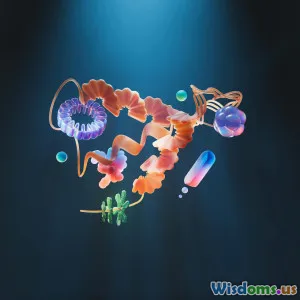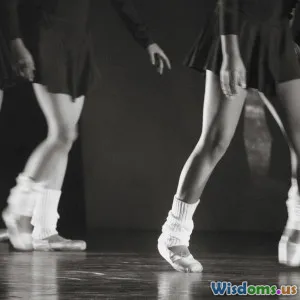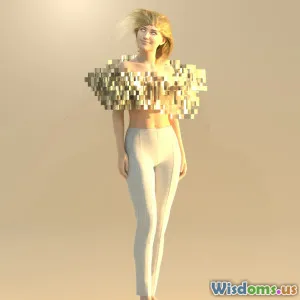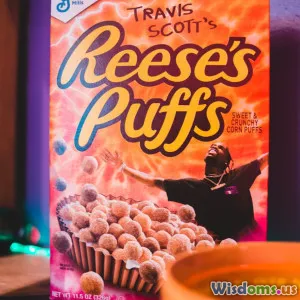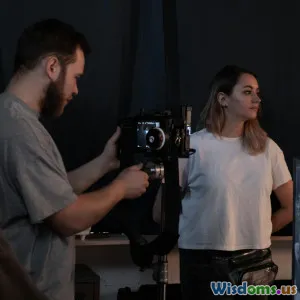
The Secret Editing Tricks Producers Use to Shape Reality TV Storylines
8 min read Explore how reality TV producers skillfully edit footage to craft gripping storylines, shaping viewer perceptions and transforming raw moments into dramatic narratives. (0 Reviews)
The Secret Editing Tricks Producers Use to Shape Reality TV Storylines
Reality TV has become a ubiquitous fixture in global entertainment, captivating millions by offering what appears to be an unfiltered window into real life. However, beneath the surface of every dramatic showdown, tearful confession, or triumphant moment lies a carefully curated narrative. Producers wield an array of sophisticated editing techniques to craft gripping storylines that not only entertain but shape viewers’ perceptions of characters and events.
In this article, we delve into these secret editing methods that bring seemingly spontaneous realities to life, pulling back the curtain on how producers shape raw footage into a compelling, and sometimes misleading, storytelling art form.
The Illusion of Unscripted Reality
One of the core appeals of reality TV is authenticity—or at least, the appearance of it. Audiences believe they are witnessing real moments unfold naturally. Yet, the magic and sometimes the manipulation lie in post-production.
Editing is often dubbed the "secret director" of reality shows because it controls pacing, mood, and meaning. Raw hours of footage are compressed into digestible episodes, and producers select specific angles, takes, and timing to suggest cause and effect, rivalries, or alliances—whether or not those connections truly existed.
According to a 2013 interview with a veteran reality TV editor, nearly 100 hours of footage can be reduced to just one hour of broadcast-ready content, leaving ample space to reinterpret interactions by shifting clip orders or inserting reaction shots out of their original context.
Key Editing Techniques Shaping Reality TV Narratives
1. Selective Cutting and Juxtaposition
The simplest yet most powerful trick is selective cutting—choosing which shots to include ( "kills") and which to remove. By carefully juxtaposing clips, editors can imply relationships and conflicts.
Example: In "The Real Housewives" franchise, a seemingly candid conversation might be edited alongside a contrasting reaction shot to create the illusion of tension. Two harmless statements spaced apart and re-sequenced can suggest an argument. This technique, known as "frankenbiting," involves piecing together parts of sentences from different takes to form unintended meanings—a method shown in multiple behind-the-scenes exposés.
2. Sound Design and Musical Scoring
Sound is integral to shaping emotion and narrative flow. Background music cues, suspenseful tones, or ominous bass lines anchor audience reactions.
For instance, a contestant entering a room might be accompanied by an eerie or upbeat theme, signaling villain or hero immediately. Music acts as a subtle but constant narrative guide, often cueing us how to feel about a scene without explicit dialogue.
3. Reaction Shots and Pacing
Strategic injection of reaction shots recalibrates storytelling. Reaction clips can be used to exaggerate a conflict or amplify drama, even if the events eliciting those reactions are unrelated.
Pacing also accelerates or dampens tension; quick cuts in rapid succession can build suspense or chaos, whereas longer takes suggest calm or reflection. The rhythm created by editing defines narrative mood.
4. Confessionals and Narrative Framing
Talking-head confessionals are a primary tool for shaping narratives. Contestants’ words are carefully edited to summarize opinions, justify behavior, or tease potential drama.
Surprisingly, the placement of confessionals—the order and timing—can flip perceived motivations. Opening an episode with a negative confession sets antagonist tones; concluding with a positive reflection softens an otherwise harsh portrayal.
Real-World Examples of Editing Shapes Storylines
Survivor: The Art of the Strategic Montage
"Survivor," one of the longest-running reality competition shows, is well-known for meticulously crafted story arcs built via editing.
Producers use confessionals, flashbacks, and zooms on subtle facial expressions to plant seeds of suspicion and alliance. Often, clever editing in episodes emphasizes the rise or fall of individuals through montage sequences, interspersed with suspenseful music enhancing emotional stakes.
A notable incident was the portrayal of contestant Kelley Wentworth in season 35, where editors framed her as both a fierce competitor and an emotional underdog through selective clip sequencing and background scoring, boosting audience empathy and engagement.
Love Island and Manufactured Romance
"Love Island" thrives on romance and drama. But editors work behind the scenes to weave romances that seem instantaneous or betrayals that appear sudden.
By selectively including scenes of flirtation and cutting out neutral moments, producers create heightened romantic tension. Additionally, reaction shots from third parties, coupled with strategically shown text overlays or voiceovers, guide viewers’ alignments with certain contestants, deepening intrigue.
Psychological Impact on Viewers
Editors understand cognitive biases, like the availability heuristic, where people rely heavily on immediate examples. By repetitively showing certain behaviors or emotional reactions, editors can skew perceptions, leading audiences to form strong opinions quickly.
This editing power has mixed ramifications: while it makes for engaging television, it can also misrepresent individuals, sparking controversy about ethics and authenticity.
Behind the Scenes: Insider Insights
Former editors and producers have revealed the intense pressure to deliver drama, often irrespective of true occurrences. One Emmy-winning editor shared how producers sometimes instruct to "make sure this contestant appears the villain this week," escalating conflicts through cut orders.
Additionally, the timeline from filming to airing allows selective editing to react to audience feedback, tuning storylines to maximize ratings and social media buzz. This agility in storytelling blurs lines further between reality and fiction.
Conclusion: The Manufactured Reality We Watch
The secret editing tricks employed by reality TV producers transform disparate real-world moments into cohesive, often sensationalized narratives. From subtle cut placement to layered sound design, these methods amplify emotions, create conflicts, and sculpt compelling characters from complex human behavior.
Understanding these techniques enriches appreciation for the intensive craftsmanship behind the scenes and invites viewers to critically assess what they watch. It underscores that while reality TV may capture genuine moments, it is ultimately a narrative art, where reality is as much constructed as it is recorded.
Armed with awareness about these editing secrets, viewers can enjoy reality television for both its entertainment value and its storytelling mastery—seeing beyond the screen, recognizing the artifice, and appreciating the power of narrative editing.
Rate the Post
User Reviews
Popular Posts









